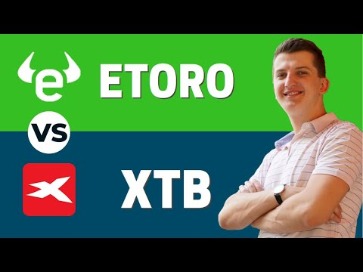Contents

The bullish hammer candles include the hammer and inverted hammer, which appear after a downtrend. The bearish variations of hammer candles include the hanging man and the shooting star, which occur after an uptrend. It indicates that the asset price has reached its bottom, and a trend reversal could be on the horizon. Moreover, this pattern shows that sellers or bears entered the market, pushing the price, but the bulls absorbed the pressure and overpowered them to drive up the price. West Texas Intermediate crude oil price fell during the 3rd week of August 2022.

It forms at the end of the downtrend and shows that, although bears pulled the price down, they couldn’t maintain control, and the price closed up. A hammer candlestick pattern forms in a relatively simple way. For one, it mostly forms at the end of a bearish trendline. This means that when you see a see a hammer candlestick pattern in a ranging market, it is not always a good thing to buy. Hammer and inverted hammer are both bullish reversal patterns that take place at the end of a downtrend.
The black candlestick confirms that the decline remains in force and selling dominates. When the second candlestick gaps down, it provides further evidence of selling pressure. However, the decline ceases or slows significantly after the gap and a small candlestick forms.
How Do You Trade a Hammer Candlestick?
The Shooting Star is a bearish reversal pattern that looks identical to the inverted hammer but occurs when the price has been rising. This move would form a classic hammer pattern on a chart, and technical traders would then expect eurodollar to enter a new uptrend. Please ensure you understand how this product works and whether you can afford to take the high risk of losing money.
It occurs at the end of a downtrend when the bears start losing their dominance. In the chart below, we see a GBP/USD daily chart where the price action moves lower up to the point where it prints a fresh short term low. The inverted hammer is one of the most popular candlestick patterns and is considered essential for technical analysis. Primarily, the indicator is used to identify a bullish reversal pattern, marking the end of a downtrend. An inverted hammer is formed when the opening price is below the closing price.
- The day prior to the inverted hammer is a bearish candlestick.
- Determine significant support and resistance levels with the help of pivot points.
- The hammer is a bullish pattern, and one should look at buying opportunities when it appears.
However, unlike an inverted hammer, the hammer candlestick has a tiny or no upper wick but a lower wick that is quite long. Patterns can form with one or more candlesticks; most require bullish confirmation. The actual reversal indicates that buyers overcame prior selling pressure, but it remains unclear whether new buyers will bid prices higher. Without confirmation, these patterns would be considered neutral and merely indicate a potential support level at best. Bullish confirmation means further upside follow through and can come as a gap up, long white candlestick or high volume advance.
Hammer Candlestick Explained
To trade when you see the inverted hammer candlestick pattern, start by looking for other signals that confirm the possible reversal. If you believe that it will occur, you can trade via CFDs or spread bets. These are derivative products, which mean you can trade on both rising and falling prices. This pattern forms a hammer-shaped candlestick, in which the lower shadow is at least twice the size of the real body. The body of the candlestick represents the difference between the opening and closing prices, while the shadow shows the high and low prices for the period.
The small candlestick afterwards indicates consolidation. White/white and white/black bullish harami are likely to occur less often than black/black or black/white. To be considered a bullish reversal, there should be an existing downtrend to reverse.

A bullish engulfing at new highs can hardly be considered a bullish reversal pattern. Such formations would indicate continued buying pressure and could be considered a continuation pattern. In the Ciena example below, the pattern in the red oval looks like a bullish engulfing, but formed near resistance after about a 30 point advance. The pattern does show strength, but is more likely a continuation at this point than a reversal pattern.
The risk-averse trader would have saved himself from a loss-making trade on the first hammer, thanks to Rule 1 of candlesticks. However, the second hammer would have enticed both the risk-averse and risk-taker to enter a trade. After initiating the trade, the stock did not move up; it stayed nearly flat and cracked down eventually. A bullish hammer has a short body and a long lower shadow that is at least twice the size of the body. The hammer candlestick resembles a hanging man candlestick and even a shooting star. A hammer pattern forms when a candle breaks out in the green and then it loses some of those gains.
The unique three river is a candlestick pattern composed of three specific candles, and it may lead to a bullish reversal or a bearish continuation. The hammers also help traders identify and interpret other indicators such as tweezer formation, Doji, etc. The inverted hammer candle is green in colour, and it creates a bottom shadow that is quite lengthy. Money Flows use volume-based indicators to access buying and selling pressure.
Samantha Silberstein is a Certified https://topforexnews.org/ Planner, FINRA Series 7 and 63 licensed holder, State of California life, accident, and health insurance licensed agent, and CFA. She spends her days working with hundreds of employees from non-profit and higher education organizations on their personal financial plans. Sellers pushed prices back to where they were at the open, but increasing prices shows that bulls are testing the power of the bears.
Although in isolation, the Shooting Star formation looks exactly like the Inverted Hammer, their placement in time is quite different. The main difference between the two patterns is that the Shooting Star occurs at the top of an uptrend and the Inverted Hammer occurs at the bottom of a downtrend . 77.93% of retail investor accounts lose money when trading ᏟᖴᎠs with this provider. It would be best if you observed the downward trend that was in place before the candle was formed to understand the pressure of the sellers in the market. While the candle’s colour is unimportant, you can use it to understand if there is a bullish or a bearish trend reversal. Commodity and historical index data provided by Pinnacle Data Corporation.
StockCharts.com maintains a list of all stocks that currently have common candlestick patterns on their charts in the Predefined Scan Results area. To see these results, click here and then scroll down until you see the “Candlestick Patterns” section. After a decline, the hammer’s intraday low indicates that selling pressure remains. However, the strong close shows that buyers are starting to become active again. The hammer is made up of one candlestick, white or black, with a small body, long lower shadow and small or nonexistent upper shadow.
Once the confirmation candle appears, traders exit their short position or take a long position. Individuals entering a long position can place a stop loss order below the hammer’s low price. An inverted hammer tells traders that buyers are putting pressure on the market. It warns that there could be a price reversal following a bearish trend. Lastly, consult your trading plan before acting on the inverted hammer. How to trade the hammer candlestick pattern As stated earlier, a hammer is a bullish reversal pattern.
Key Factors to Consider Before Using the Inverted Hammer Pattern
Just as with the bullish engulfing pattern, selling pressure forces the security to open below the previous close, indicating that sellers still have the upper hand on the open. However, buyers step in after the open to push the security higher and it closes above the midpoint of the previous black candlestick’s body. Further strength is required to provide bullish confirmation of this reversal pattern.

After a 6-https://en.forexbrokerslist.site/ decline back to support in late May, a bullish harami formed. The first day formed a long white candlestick, while the second formed a small black candlestick that could be classified as a doji. The next day’s advance provided bullish confirmation and the stock subsequently rose to around 75.
Existing Downtrend
If you invest in stocks regularly, you must know how to trade using an inverted hammer. While no patterns are concrete, they give a fair idea about the market movements. An inverted hammer shows a trend reversal, but you must look for other indicators like a double bottom or a V-bottom to reach a conclusion. The inverted hammer candlestick fails if the candle creates a new high, and the candle bottom has no significance if it reaches a new low.
Is an Inverted Hammer the same as a Shooting Star?
Although not in the green yet, CMF showed constant improvement and moved into positive territory a week later. For those that want to take it one step further, all three aspects could be combined for the ultimate signal. Look for bullish candlestick reversal in securities trading near support with positive divergences and signs of buying pressure.
However, the https://forex-trend.net/ then closes slightly above the previous close, as shown above. As a result, the next candle exploded higher as the bulls felt that the bears were not so dominant anymore. Hence, the inverted hammer should be seen as a testing field in this case.
It will mean that buyers are now taking charge of the market prices with high demand and are dominating over the sellers. Learn all about how to trade the different types of hammer here. When encountering an inverted hammer, traders often check for a higher open and close on the next period to validate it as a bullish signal. The inverted hammer pattern indicates that the traders might buy the stock at a lower price. Post such purchases, the buyers in the market ensure that the stock price goes up, creating an inverted hammer candlestick. After all, no technical analysis tool or indicator can guarantee a 100% profit in any financial market.

Recent Comments